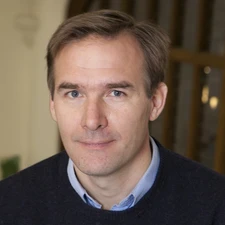Jeroen Tromp

The 2013 Beno Gutenberg Medal is awarded to Jeroen Tromp for his fundamental contributions in seismology and in geophysics, as well as for his vision and drive in making numerical wave field calculations and adjoint calculations available to all.
Jeroen Tromp is an outstanding and influential theoretical, computational, and observational seismologist. He is well known for the excellent monograph co-authored with Tony Dahlen: Theoretical Global Seismology (Princeton University Press, 1998), and he has made numerous other theoretical contributions. His works in observational seismology include his normal mode study providing confirmation of the anisotropy of the inner core, a study of surface wave phase velocities, and a study applying normal mode and gravity data seeking to constrain three dimensional density structure.
With Mitrovica and others, he has also investigated the problem of surface loading and postglacial rebound. Following landmark papers with Komatitsch, building on work by Jean-Pierre Vilotte and others, in which the spectral finite element method (SPECFEM) was developed as tool for global seismology, this method has become a widespread tool in seismology at both global and regional scales. As one of the founding members of Computational Infrastructure for Geodynamics, a community effort to pool resources and share the effort of software development and maintenance, he has ensured that the SPECFEM programmes are readily available to all, so that accurate waveforms for three dimensional models can now be used for an enormous variety of applications.
Building on work by Albert Tarantola and others, Tromp has also been instrumental in developing so called adjoint methods for applications in seismic imaging. With co-workers, Tromp is now developing tomographic models using this new technology. It is to be expected that the next generation of three dimensional global and regional tomographic models will possess much higher resolution by virtue of using a greater proportion of the information contained in seismic waveform data. In pursuing this goal of using fully numerical wave field calculations in seismic imaging Tromp has shown visionary leadership, anticipating how petaflop capabilities could be harnessed when most of the seismological community was experimenting with the application of modest clusters.
Tromp’s theoretical and computational contributions, together with his vision and drive, have made a major and fundamental contribution to seismology. For this, he is fully deserving of the Beno Gutenberg Medal.
